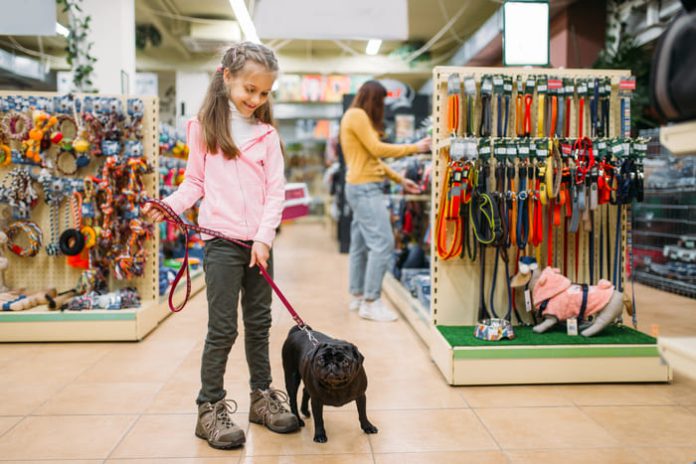
Before you even start worrying about writing job descriptions and conducting interviews, your first step in hiring for your pet store should be establishing a thorough training process. Without the necessary training, even the most qualified employees will struggle.
Pet stores are complex retail environments that blend customer service, animal care, and product expertise to create a seamless shopping experience. This means that your training approach needs to be especially thorough to ensure it covers all the necessary tasks. Let’s explore practical and effective staff training strategies for pet stores that ensure your employees feel confident and comfortable executing their responsibilities.
1. Establish a Structured Onboarding Plan
Before you opened your pet store, you probably put together a business plan that outlined everything you and your funders needed to know about your operations. Apply the same planning-focused mindset to your onboarding to ensure no details are overlooked.
A structured onboarding plan reduces confusion and creates a productive work environment. While this plan doesn’t need to be as detailed as your business plan, it should be consistently applied to new hires.
Here are a few tips for establishing your onboarding plan:
- Create a day-one checklist that includes tasks such as team introductions, a store tour, safety procedures, and reviewing the employee handbook.
- Map out a 30 to 90-day training timeline that clearly outlines learning objectives and goals for each phase.
- Include key milestones and assessments to gauge progress and adjust training pace as needed.
- Cover both operational and administrative tasks, such as greeting and assisting customers, versus logging work hours.
- Assign onboarding buddies or mentors to answer questions and provide support during the first few weeks.
If you’ve previously hired new employees, consider surveying them for feedback on how the onboarding process went for them. Their insights can be extremely valuable while shaping your onboarding process to ensure new hires get the support they need.
As a pet store owner, you may hire individuals who have never held a job before, including teenagers. This is especially true if you’re just looking for seasonal help over the summer, as you may attract students who want to make the most of their time off from school. When you design your onboarding plan, be cognizant that you may be dealing with truly entry-level employees. Adjust your strategy accordingly. For instance, you might build in more training time than you would otherwise think is necessary to account for the potential confusion a newer employee might experience.
2. Prioritize Hands-On Learning
In pet retail, there’s no substitute for learning by doing. While some training can be verbal or digital, hands-on experience builds the confidence new employees need to fill their roles properly. Here are a few ways to incorporate hands-on, activity-based learning in your training process:
- Have new hires shadow their mentors during shifts to observe store routines and customer interactions. This can be particularly useful because experienced employees can show new hires the ropes and answer any questions about specific tasks.
- Practice daily tasks together, like feeding animals, maintaining tanks, or prepping grooming stations. Every pet store has a unique routine or a specific way of handling tasks, so it’s essential to practice with new employees to show them how it’s done.
- Create “train-the-trainer” moments where new staff teach back what they’ve learned to reinforce their knowledge. This also provides an opportunity for experienced staff members to correct any misunderstandings about the new hire’s responsibilities.
- Role-play customer scenarios to help employees build confidence in client interactions. Go over common scenarios like returns, product recommendation requests, phone inquiries, and handling pets on the sales floor to empower employees to take action when they experience these situations.
For instance, let’s say you’ve followed eTailPet’s recommendation of building an inventory categorization system. Your new hire might immediately grasp that pet food, toys, and accessories are all stored in different areas, but struggle to remember where exactly everything goes without handling inventory a few times. Ensure your new hire has the opportunity to observe and experience this process during training by asking them to arrange your back-room stock and display new items on the sales floor.
3. Use Digital Tools to Reinforce Training
Supplement hands-on instruction with digital tools that reinforce training and make training resources accessible anytime. This is especially helpful for important but rarely handled tasks, as employees may need to re-learn how to complete them.
You can use digital tools to supplement your training in the following ways:
- Offer short video tutorials on store policies, animal handling, point of sale (POS) software use, and other important information.
- Follow TopClass’s advice and implement a learning management system (LMS) that enables you to standardize training and track progress throughout onboarding.
- Set up quizzes or short assessments to reinforce learning and identify knowledge gaps, which you can do through an LMS or pen and paper.
- Enable ongoing access to resources such as product catalogs, store FAQs, or animal care guides that employees can look at whenever they need to refresh their memories.
Remember to update your resources and tools whenever you change your process. If you’re hiring new employees, double-check these resources to ensure all the information is correct. Conflicting or incorrect details can confuse new hires and make your pet store seem disorganized.
4. Foster a Culture of Continuous Feedback
Supportive feedback helps new employees stay motivated and engaged while they learn how to conduct their responsibilities around your pet store. It allows them to understand how they’re doing and offers them the time and space to ask questions.
Start by scheduling regular check-ins during the hire’s first month of employment. Use these meetings to discuss the employee’s performance and answer any of their questions. Go over anything confusing them and ensure there are no misunderstandings about their responsibilities. Take the time to celebrate their wins, such as positive customer interactions or completed training milestones. Getting positive reinforcement at this time can be extremely meaningful, especially for employees working their first jobs.
Additionally, ask your new hires for their feedback on your training process. Ask them what’s working, what’s confusing, and how you can support them better as they learn how to handle their tasks. This feedback is valuable in helping you enhance your pet store’s training strategies, ensuring you develop an effective system.
Naturally, you want your pet store to deliver a great customer experience to visitors, and capable, informed, and passionate staff members help you achieve that. Think of new employees as play-dough. Training shapes and molds that play-dough into valuable employees. So take the time to review your existing onboarding and training processes and identify where you can improve them.




